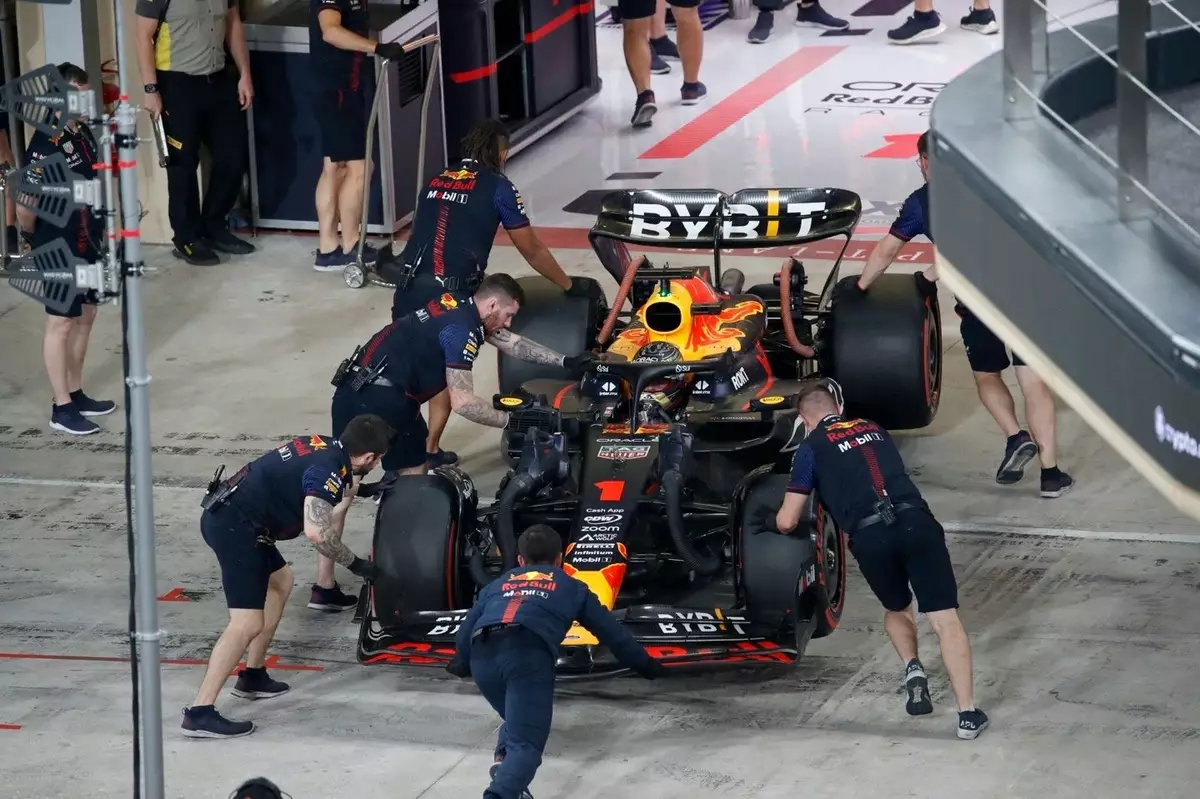In the fiercely competitive arena of Formula 1, where every millisecond counts, teams are consistently pushing the boundaries of technological innovation. Recently, Red Bull Racing found itself at the center of a polemic regarding a front bib height adjustment device. While the team has openly admitted to its existence, they assert it poses no regulatory issues when the car is fully assembled. This unfolding situation not only raises questions about the legality of such innovations but also the implications for the overall fairness of the sport.
The FIA’s role as the governing body of Formula 1 is to enforce regulations and ensure fair play among all competing teams. Speculation regarding Red Bull’s device kicked off just before the United States Grand Prix, igniting a flurry of concerns from rival teams. The governing body announced a clampdown to mitigate potential exploitation of technical regulations surrounding parc ferme conditions, which restrict modification of vehicles between qualifying sessions and the race itself. By implementing new procedures, including the addition of seals on height-adjustment devices, the FIA aims to preemptively tackle any attempts at bending the rules.
Team dynamics change dramatically with the introduction of new regulations; rival factions unite against perceived unfair advantages. The FIA’s proactive approach is intended to ensure a level playing field, but the situation around Red Bull has thrust additional scrutiny upon its practices and methodologies, emphasizing the necessity for transparency in technology deployment.
In response to mounting speculation, Red Bull has vehemently denied any wrongdoing, insisting their device becomes inaccessible once the car is assembled and ready for the race. This assertion aims to protect the integrity of the team’s engineering choices while addressing allegations of manipulation. The team’s technical staff maintains that the ride height adjustment program operates within the framework of allowable adjustments during practice sessions.
Further complicating matters, although nothing concrete indicated wrongdoing, the FIA decided to intensify monitoring of ride height mechanisms across the grid. Such measures reinforce the sense that the lines between legal innovation and illicit gaming of the rules can be perilously thin, particularly in a high-stakes environment like Formula 1.
The crux of the ongoing dialogue between Red Bull and its competitors is the broader implications for competitive balance in Formula 1. Red Bull’s advancements, particularly their innovative aerodynamic features like the ‘mini-DRS,’ contribute to their performance and success on the track. As teams vie for superiority, the potential misuse of design elements—whether intentional or circumstantial—can exacerbate rivalries and drive further regulatory developments.
Discussions during the Singapore Grand Prix indicate that teams are acutely aware of each other’s capabilities and intricacies. The tension for a fair racing experience intensifies as stakeholders seek assurances from the FIA that the parameters established are adhered to by all teams. Proper regulation and rigorous enforcement are paramount not just for maintaining competitive integrity, but for safeguarding the essence of motorsport as a challenge of engineering excellence and driving skill.
As the 2023 Formula 1 season progresses, the controversy surrounding Red Bull serves as a crucial example of the ongoing battle between innovation and regulation. With tensions mounting between teams and the FIA now stepping up its scrutiny, the framework of rules must evolve continuously to keep pace with technological developments without stifling creativity.
This incident encapsulates the complexities of modern motorsport, where the difference between success and failure can hinge on the minutiae of regulations amid fierce competition. Understanding and adapting to these challenges not only ensure fairness but also preserve the sport’s integrity, fundamentally impacting its future. The outcome of this situation will likely not only shape the championship race between Red Bull and McLaren but also set the tone for how technical innovations are approached—and regulated—in Formula 1 going forward.


Leave a Reply